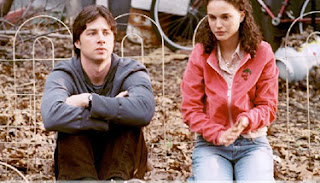I have used a blog before. I just find things (movie clips, songs, lyrics, etc.) that I want to share with my friends or people who enjoy the same things as me. I didn’t mind using the blogs in RTF. I did like that I could visit the blogs of my cohorts if I was struggling with what to write or having issues with how to structure my posts. I didn’t have any problems with the blogs, though there were times that I wished they were due later since Sunday nights are always big homework nights for me. I very much preferred the types of blog prompts that were actually film related. Sometimes we were asked to speak on an issue (like posts five and ten) that I was less confident in. Though these were more difficult, they did help me to better understand foreign subjects, but only through severe distaste. I would recommend using the blog in RTF in the future for the simple reason that there is a growing digital trend not only in the university, but in the work force. It only makes sense to begin to prepare students for the real world by asking them to perform assignments over the internet. I would suggest being lenient with the cutoff dates of these posts, though, since the internet CAN be a bit unreliable at times (bad weather, etc.) As a whole, I think the blogs were a success, and should be continued in the years to come.
 |
| Dogma - The Buddy Christ |




